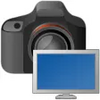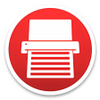Windows-based photo editing tool designed specifically for influencers, designers, and photographers
Windows-based photo editing tool designed specifically for influencers, designers, and photographers
Popular programs in Design & photography software
What is Pixlr
Pixlr is a powerful suite of image-editing tools that you can use at no charge.
Pixlr is an image-editing suite that was originally developed by Autodesk but which is now developed and maintained by 123RF, a division of Inmagine Group. The rise of social media changed how many creators create, and Pixlr was designed by Autodesk as a cloud-based image-editing toolbox that you could access from anywhere on practically any device. Another advantage is that all of the processing power is provided server-side, which means that you can perform CPU/GPU-intensive edits regardless of how powerful the device you were actually using. Better yet, you can use Pixlr aas often and as much as you like for free—at least in the sense that you do not have to pay anything. There are ads, and whether or not that is a deal-breaker is a topic we will dive into toward the end of this review.
There is a whole new breed of content creator that interacts with their audience through platforms like Twitch, Twitter and YouTube. These creators are often on the go and interacting in real-time. Pixlr is perfect for such scenarios since it is web-based. No matter what device you are using, you can snap a photo, upload to your device, auto fix it, manually edit it, have access to it from any other Internet-connected device and distribute to whichever sharing platforms you use. While such capabilities probably seem a bit obvious from the perspective of now, this was a game changer when Autodesk originally released it and a primary reason why Pixlr continues to be so widely used today.
The studio behind Pixlr makes the program available to you in two ways: platform-specific web-based clients and as a browser extension. Pixlr has versions for Windows—the version review here—Android, iOS, Mac and Linux. It also supports most of the major web browser with extensions, such as Chrome, Edge and Firefox. It works with Safari too. This means that there is a way to use Pixlr from practically any device, and if you have a Windows PC, an Android smartphone and an Apple iPad, for instance, you will have no problem accessing and editing your images from all three and keeping synced.
Powerful and customizable are the two most apt adjectives with which to describe the Pixlr user interface. The UI is intuitive as well—to a degree. The basic tools are easy to use. Some of the more advanced tools may seem hidden and less obvious to use. On the plus side, the UI uses a panel-based configuration similar to the major desktop photo software. You can move panels around to suit your tastes. You can emphasize the panels you use the most and deemphasize or even hide those you do not need. The UI also has a clever history tool that makes undoing and redoing changes a breeze.
Another feature that distinguishes Pixlr from the field is that with any image you upload, you only need tap a single button to fix that image automatically. It can, for instance, automatically eliminate red eye from photos, which is convenient when taking snapshots on the go and uploading them to social media. Advanced users can even customize the auto fix feature, and there a wide variety of AI tools that you can activate. You may be taking pictures in a particular area where you are getting artifacts due to lighting or some other environmental issues, and you can set up auto fix to correct this on the fly. A feature we would like to see added is profiles for auto fix so that we could switch back and forth with ease.
Pixlr, of course, supports manual editing as well, and the sheer number of tools offered is rather impressive—even in the free version. Just as with a program like Photoshop, you can sharpen, brighten and otherwise tweak colors. You can change all pixels of one color to another. Users can add or reduce contrast. You can rotate and crop images, and if you are cropping to create a new image, Pixlr makes that simple as well. Pixlr gives you all the tools needed to read and manipulate metadata. There are also a host of quick fix functions as well. These allow you to perform one-tap touch-ups, and these functions are customizable too, which is quite powerful if you have custom edits you perform often.
This suite of imaging tools also allows you to enhance images. It boasts a wide range of effects, such as Soft and Vintage. There is also a dozen or more categories of other effects that are less obvious to name, and the developer has taken a strange approach to naming them, such as Fred and Helena. But the more we used it, the more the naming convention worked. In addition to effects, Pixlr provides numerous overlays that you can use to decorate your images, and it even lets you create your own overlays for future use, which is a nice touch for content creators who want to emphasize their own brand.
The developer has to make money somehow. One way it does this is through a subscription. It is relatively inexpensive compared to its competition, and if you buy your sub on an annual basis, you are looking at the cost of one Starbucks coffee a month. People who use Pixlr often should definitely consider the sub since there are tools not available in the free version, and when it comes to effects, overlays and the like, the count increases from in the dozens to in the thousands.
The ad-supported version of Pixlr is somewhat of a mixed bad. Ads aside, it is amazing. But the ads can be invasive and many users complain that the situation has gotten worse since the sale. Since Pixlr is ad-based, an ad blocker can work, and many users have resorted to using it. But that has led to a cat-and-mouse game between the developers and users seeking a free lunch, which we personally feel is too much a hassle to deal with. The developers deserve to get paid. That said, the ads can at times be so invasive as to slow the application to a crawl, which completely eliminates one of the app’s greatest strengths.
Pros
- Sophisticated photo editing for free
- An impressive toolbox of editing tools
- Makes it simple to work from anywhere
Cons
- Ad supported
- Sub required for all features





